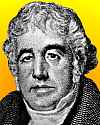
On 29 Dec 1766, Charles Macintosh was born, a Scottish chemist and inventor who created a waterproof cloth used for clothing. Waterproof coats are still known by his name, or the shorter word “mac.” One of the early pages on this website was written about Charles Macintosh to give an outline of the inventiveness of this businessman.

On 29 Dec 1800, Charles Goodyear was born, an American inventor, who invented the vulcanization process which made rubber products practical. Today's book pick is: The Goodyear Story: An Inventor's Obession and the Struggle for a Rubber Monopoly, by Richard Korman, who tells a suspenseful story of scientific experimentation and continual patent monopoly battles. Goodyear made numerous trips to debtors' prison as he steadfastly held onto his dream of using rubber to change just about every aspect of life. The book portrays the factory life during America's industrial age in the 1830s and '40s describing the aproned men who chopped rubber with axes and knives and the machines that ground it.
It is available from Amazon, typically about New from $28.40. Used from $4.29. (As of earlier time of writing - subject to change.)
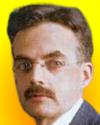 | “Planning” is simply the result of experience read backward and projected into the future. To me the “purposive” action of a beehive is simply the summation and integration of its units, and Natural Selection has put higher and higher premiums on the most “purposeful” integration. It is the same way (to me) in the evolution of the middle ear, the steps in the Cynodonts (clearly shown by me in 1910 and by you later in Oudenodon) make it easier to see how such a wonderful device as the middle ear could arise without any predetermination or human-like planning, and in fact in the good old Darwinian way, if only we admit that as the “twig is bent the tree’s inclined” and that each stage conserves the advantages of its predecessors… The simple idea that planning is only experience read backward and combined by selection in suitable or successful combinations takes the mystery out of Nature and out of men’s minds. |
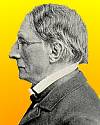 | For the first time there was constructed with this machine [locomotive engine] a self-acting mechanism in which the interplay of forces took shape transparently enough to discern the connection between the heat generated and the motion produced. The great puzzle of the vital force was also immediately solved for the physiologist in that it became evident that it is more than a mere poetic comparison when one conceives of the coal as the food of the locomotive and the combustion as the basis for its life. |
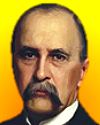 | The future belongs to Science. More and more she will control the destinies of the nations. Already she has them in her crucible and on her balances. |
| Before you look at today's web page, see if you can answer some of these questions about the events that happened on this day. Some of the names are very familiar. Others will likely stump you. Tickle your curiosity with these questions, then check your answers on today's web page. | |
| Births | |
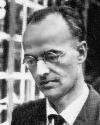 | A German-born physicist turned spy was born 29 Dec 1911. He worked with the Manhattan Project at Los Alamos, U.S., on the atom bomb, and in 1946 became head of the theoretical physics division at Harwell, UK. He was arrested and convicted (1950) for giving vital American and British atomic-research secrets to the Soviet Union. Can you name this spy? |
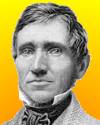 | On 29 Dec 1800, Charles Goodyear was born, an American inventor, who discovered the vulcanization process that made possible the commercial use of rubber. Originally the use of rubber was limited since it would freeze hard in winter and become gummy in summer. After years of persistent experimentation, he mixed and baked a certain substance and rubber together, creating a tough, cured compound that could withstand the heat and stress. Goodyear discovered which substance to add to rubber in the vulcanizing process? |
 | The name of Charles Macintosh, a Scottish inventor, born 29 Dec 1766, remains associated with the raincoat made with cloth waterproofed by the process he invented. What was Macintosh's waterproofing method? |
| Deaths | |
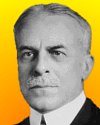 | William Merriam Burton (1865-1954) was an American chemist who developed a thermal cracking process for the refining of crude petroleum. What is the benefit of his process? |
| Events | |
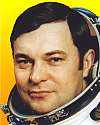 | On 29 Dec 1987, cosmonaut Yuri Romanenko ended his record stay in space. What was the duration of his time in space, to the nearest hundred days? |
 | On 29 Dec 1997, a country began killing its entire chicken population to stem the spread of a mysterious avian flu that had already killed four people. The government decision came after birds at two sites were found to be infected with the H5N1 virus. Which is this country, which was the first where humans died from the H5N1 flu virus. |
Fast answers for the previous newsletter for December 28: stretches of DNA • bending of starlight by gravity • Eiffel Tower • a relationship between the values of the wave numbers of spectral lines of an element. • the Firth of Tay at Dundee, Scotland • alpha particles (hint: do the math on the protons to change Be to C).
 If you enjoy this newsletter, the website, or wish to offer encouragement or ideas, please send feedback by using your mail reader Reply button.
If you enjoy this newsletter, the website, or wish to offer encouragement or ideas, please send feedback by using your mail reader Reply button. Your click on a Facebook, StumbleUpon, or other social button on the site webpages is also a welcome sign of appreciation. Thank you for using them.
© This newsletter is copyright 2019 by todayinsci.com. Please respect the Webmaster's wishes and do not put copies online of the Newsletter — or any Today in Science History webpage. (If you already have done so, please remove them. Thank you.) Offline use in education is encouraged such as a printout on a bulletin board, or projected for classroom viewing. Online, descriptive links to our pages are welcomed, as these will provide a reader with the most recent revisions, additions and/or corrections of a webpage. For any other copyright questions, please contact the Webmaster by using your mail reader Reply button.
--
If you do not want to receive any more newsletters, Unsubscribe
To update your preferences and to unsubscribe visit this link
Executive Real Estate Business Class
-
"It was like a man with wings. It wasn't like anything you'd see on TV or in a monster movie." ...
About the publisher
Search This Blog
Blog Archive
-
▼
2020
(1542)
-
▼
December
(121)
- On This Day for December 31 - Ottawa made capital ...
- Newsletter for Thursday 31 December.
- December 31: The Battle of Quebec, a Rainy Day in ...
- All That's Interesting's 10 Most Popular Stories O...
- On This Day for December 30 - Union of Soviet Soci...
- Newsletter for Wednesday 30 December.
- December 30: Creation of the USSR, the All India M...
- Know Better in 2021
- On This Day for December 29 - U.S. annexation of T...
- Newsletter for Tuesday 29 December.
- December 29: On This Day in History
- The Best of HISTORY This Week
- The 10 Best History Uncovered Articles Of 2020
- On This Day for December 28 - Westminster Abbey op...
- Newsletter for Monday 28 December.
- December 28: Galileo Observes Neptune, Harriet Tub...
- The death of Thomas Becket | The history of New Year
- On This Day for December 27 - Dutch transfer of In...
- Newsletter for Sunday 27 December.
- December 27: On This Day in History
- On This Day for December 26 - Indian Ocean tsunami...
- Newsletter for Saturday 26 December.
- December 26: 1st Spanish Settlement in the New Wor...
- The Anti-Santa Who Takes Naughty Kids To Hell, The...
- On This Day for December 25 - Christmas celebrated...
- Newsletter for Friday 25 December.
- December 25: Andrew Johnson's Christmas Pardon, Ce...
- On This Day for December 24 - Treaty of Ghent, Joh...
- Newsletter for Thursday 24 December.
- December 24: The Treaty of Ghent, Author Stephenie...
- Demystified Video: Why Is Christmas in December?
- On This Day for December 23 - Aleksander Kwaśniews...
- December 23: Van Gogh's Madness, the Partition of ...
- On This Day for December 22 - Alfred Dreyfus sente...
- Newsletter for Tuesday 22 December.
- December 22: An Impenetrable Fortress Falls, the 1...
- On This Day for December 21 - Radium discovered by...
- December 21: The Soviet Union Ends, Life in the Tr...
- A history of Christmas – from Oliver Cromwell to V...
- On This Day for December 20 - Macau made an admini...
- Newsletter for Sunday 20 December.
- December 20: US Buys Louisiana, the Viet Cong and ...
- On This Day for December 19 - Articles of impeachm...
- Newsletter for Saturday 19 December.
- December 19: On This Day in History
- The Soviet Executioner Who Killed 7,000 Poles One ...
- On This Day for December 18 - Slavery abolished in...
- Newsletter for Friday 18 December.
- December 18: The Yuan Dynasty Begins, Nuclear Powe...
- The perfect gifts for the curious kids in your lives!
- On This Day for December 17 - Flight of the Wright...
- Newsletter for Thursday 17 December.
- December 17: Tamerlane Sacks Delhi, the Wright Bro...
- Demystified: Do We Really Use Only 10 Percent of O...
- On This Day for December 16 - Boston Tea Party, Ja...
- Newsletter for Wednesday 16 December.
- December 16: A Boston Tea Party, the Battle of the...
- Haunting Kennedy Assassination Photos That Most Pe...
- On This Day for December 15 - Premiere of Gone wit...
- Newsletter for Tuesday 15 December.
- December 15: Vandals, Mongols and the US Bill of R...
- On This Day for December 14 - Roald Amundsen's arr...
- Newsletter for Monday 14 December.
- December 14: Amundsen and Scott's Epic Race to the...
- On This Day for December 13 - New Zealand sighted,...
- Newsletter for Sunday 13 December.
- On This Day for December 12 - U.S. Supreme Court d...
- December 12: A Generous Manhattan Gift, Bush v. Go...
- How eels powered the medieval economy | The histor...
- 55 Of History's Creepiest Pictures And Their Distu...
- On This Day for December 11 - Abdication of King E...
- Newsletter for Friday 11 December.
- December 11: The Mayflower Pilgrims, an Abdication...
- UPDATED: Britannica Year in Review: Story of the Year
- Britannica Year in Review: Story of the Year
- On This Day for December 10 - Encyclopædia Britann...
- Newsletter for Thursday 10 December.
- December 10: Spanish-American War, Edward VIII and...
- Laurence Fishburne Hosts a New HISTORY Digital Series
- Demystified: What's the Difference Between Whiskey...
- On This Day for December 9 - Lech Wałęsa elected p...
- Newsletter for Wednesday 9 December.
- December 9: Belisarius Enters Rome, Lech Wałęsa El...
- What will you discover this Thursday?
- On This Day for December 8 - John Lennon fatally s...
- Newsletter for Tuesday 8 December.
- December 8: Lincoln's Amnesty Proclamation, the US...
- On This Day for December 7 - Pearl Harbor attack, ...
- Newsletter for Monday 7 December.
- December 7: Birth of Plastics, Infamy in Pearl Har...
- History books of the year | Historical board games...
- On This Day for December 6 - Irish Free State esta...
- Newsletter for Sunday 6 December.
- December 6: Mongols Destroy Kiev, Slavery Abolishe...
- On This Day for December 5 - Witchcraft condemned ...
- Newsletter for Saturday 5 December.
- December 5: Gold Rush in California, End of Prohib...
- HNN Newsletter: You are now unsubscribed
- 10 Medieval Execution Methods That Are The Definit...
- On This Day for December 4 - Ivan the Terrible pro...
-
▼
December
(121)
-
Blogroll
-
About
HistoryFact










0 comments:
Post a Comment